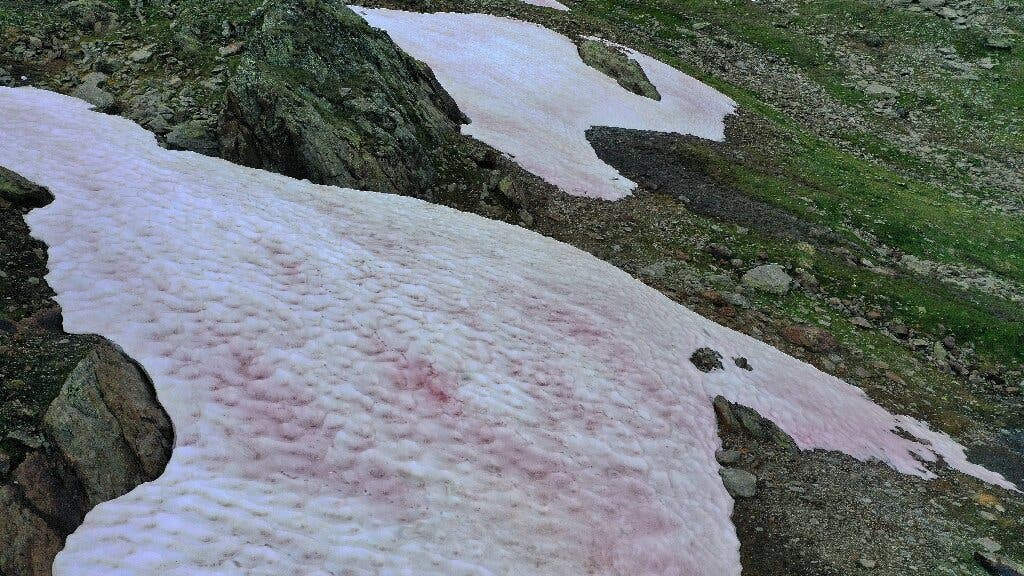Citizens and tourists in Italy were surprised by the appearance of pink glacial ice in the Alps, a phenomenon that is usually caused by algae that speed up climate change. Researchers will now study the algae to better understand where it came from.

Biagio Di Mauro, a scientist at Italy’s National Research Council, said the pink snow observed on parts of the Presena glacier is likely caused by a plant that had been previously found in Greenland. He said the algae is not dangerous and described it as a natural phenomenon that happens in middle latitudes and at the Poles.
The algae, known as Ancylonema nordenskioeldii, is also present in Greenland’s so-called Dark Zone, where the ice is also melting. Usually, ice reflects more than 80% of the sun’s radiation back into the atmosphere, but as algae appear, they darken the ice so that it absorbs the heat and melts more quickly.
More algae appear as the ice melts more rapidly due to the higher availability of liquid water. In the process, they also color the white ice at the Passo Gavia in red tones. Passo Gavia is a high mountain pass in the Italian Alps located at an altitude of 2,618 meters (8,590 feet).
“Everything that darkens the snow causes it to melt because it accelerates the absorption of radiation,” Di Mauro, told AFP. “We are trying to quantify the effect of other phenomena besides the human one on the overheating of the Earth,” said Di Mauro, claiming that tourism could be having an impact on the algae.
Meanwhile, tourists in the area regretted the impacts of climate change to the glacier. “Overheating of the planet is a problem, the last thing we needed was algae,” tourist Marta Durante told AFP. “Unfortunately we are doing irreversible damage. We are already at the point of no return, I think.”
Elisa Pongini from Florence also told AFP that she felt the Earth was “giving us back everything we have done to it.” She said this year was a special one as “terrible things” have happened, claiming atmospheric phenomena are worsening and that climate change is “increasingly evident.”
The pink glacial ice isn’t actually something new. The phenomenon was observed by the first arctic explorers, and it was initially believed to be caused by iron oxides permeating the snow. Since then, however, it was established that the hue is a product of algae that bloom in frozen water.
Previous studies have shown that these blooms are causing the snow to melt faster and they’re only going to grow more frequently as climate change increases snowmelt. In 2017, researchers argued microbial communities, including the algae, contributed to more than a sixth of the snowmelt in the locations they were present.






